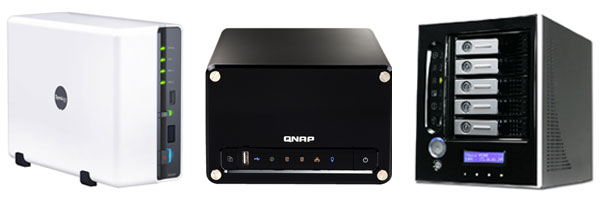This week's question is a collaboration from HEXUS and network-attached storage (NAS) specialist, Thecus.
The Taiwan-based manufacturer's forthcoming enterprise NAS, the N7700 is under the final stage of development and is scheduled for an October '08 release.
Thecus tells us that it's developing a product to deliver "not only jaw-dropping performance but also infinite expandability." In order to achieve its goals, it's looking for a little helping hand from the HEXUS.community forums. So, dear readers, Thecus wants to know what would constitute a perfect NAS device?
Before we get onto that, let's have a brief recap on what these increasingly popular devices actually are.
A NAS is a self-contained computer storage device which was once aimed largely at business users. Today, they're becoming an increasingly useful addition to the home.
The purpose of a NAS device to to provide file-based data storage services to a network. The NAS will generally feature a minimal operating system that offers basic functionality such as data storage, file systems and file management. Though, running other software on NAS devices is becoming increasingly popular.
As a standalone unit, a NAS requires no external peripherals such as a keyboard, mouse or display. It's controlled remotely and usually via an Internet browser.
Having began as a storage solution, NAS devices have grown to serve a multitude of purposes. Today, many NAS devices can serve as FTP servers, e-mail servers, surveillance systems and a whole lot more.

But, what both HEXUS and Thecus want to know is, what constitutes a perfect NAS device?
Is the unit's hardware specification all important? Or would you be willing to sacrifice a little performance in order to save energy? Are four or more USB ports essential? Does an LCD display really help? Do you have a preference for your NAS operating system, and what additional functionality have you found to be most useful?
Let us know exactly what you'd be looking for in your dream NAS device in the HEXUS.community forums.













